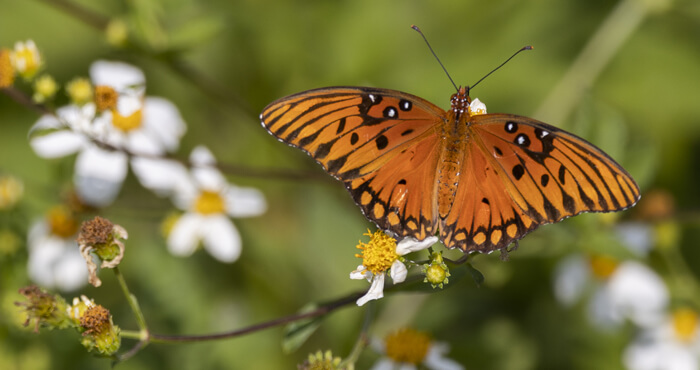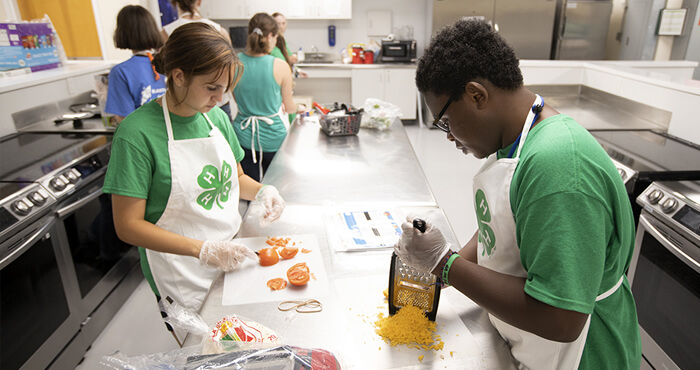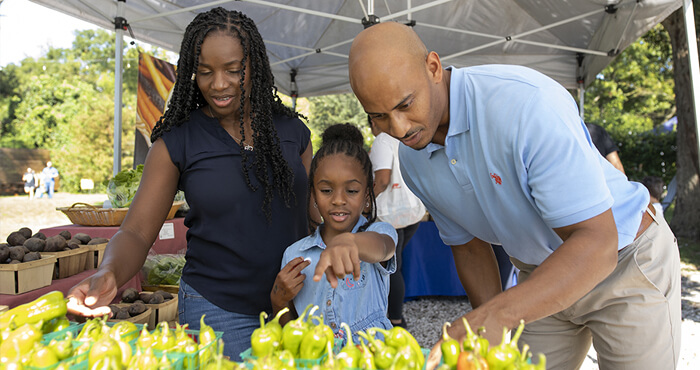
Nuisance Wildlife
Dealing with Pests
It is impossible to live in Florida without encountering wildlife daily. Many of these experiences are enjoyable, but some can be unpleasant. Negative interactions with our wild neighbors can result in injury, property damage, and minor nuisances. Some of our frustrations with wildlife can be eliminated by properly preventing situations before they occur, while others may require other forms of management.
Wildlife Problems
Snakes
- You have a hundred times greater chance of being in a highway accident than being bitten by a venomous snake.
- Snake-bite-related deaths occur in Florida at a rate of approximately one death every four or five years—less than deaths from lightning strikes.
- Snakes prefer shaded areas where they might come across prey like mice and toads.
- Snakes will not charge or chase after people. Their typical reaction is to crawl away and hide.
- When threatened, some snakes will hiss, shake their tail, and even try to bite an intimidating object.
- All snakes stick out their tongue frequently to smell their environment. A snake showing its tongue is not acting aggressively or threateningly.
Prevention and Control
Most people do not want snakes (especially venomous snakes) in their homes or on their properties.
You can deter snakes from your yard and home by eliminating firewood stacks, debris, boards, or other objects close to the ground that create cool, dark shelters and prey habitat areas. Remove snakes from buildings by placing glueboards or funneled minnow traps in snake-traveled areas, such as along walls.
There are no repellents, toxicants, or fumigants registered for snakes. Unless a home remedy has been scientifically tested, its effectiveness is questionable.
Armadillos
- More than 90 percent of an armadillo's diet is made up of insects, larvae, and other invertebrates in the soil.
- Armadillos are most active at night, when they root in the ground for food.
Prevention and Control
Partially buried slanted fencing can be used to exclude armadillos from an area and is a somewhat effective barrier.
Some people are successful with live trapping armadillos, even though it is difficult. Florida law requires that “nuisance” animals that are trapped be humanely killed or released on the same contiguous property where they were caught. This prevents ecological disturbances and disease spread.
Shooting is an option, and armadillo meat is edible; however, remember that it is illegal to discharge firearms in some areas and to use artificial lights to aid in shooting.
There are no successful repellents, toxicants, or fumigants registered for armadillos. Using insecticides on soil insects has not been proven to reduce armadillo digging.
Bats
- Bats are nocturnal and roost during the day, normally in caves and trees.
- Bats enter buildings and can roost in walls, attics, and chimneys. Their accumulated droppings cause an undesirable mess and smells.
- Bats can squeeze into cracks as small as 3/8 of an inch.
- Bats eat insects and are often attracted by flying insects around streetlights.
- The incidence of rabies in bats is exaggerated; only eight deaths in the United States and Canada in the past thirty years have been from bat-transmitted rabies.
Prevention and Control
Exclusion is the only legal method for getting rid of bats in buildings. Exclusion can only be done starting in August and continuing through the winter months. From April to August it is illegal to exclude bats from buildings because baby bats will likely be trapped inside. For more information on effective bat exclusion methods, contact your local Extension agent.
Bat repellents such as illumination and high-frequency sounds can serve as temporary solutions. Roosting boxes can attract excluded bats, but is not considered a control method.
Woodpeckers
- Woodpeckers can peck holes in a home’s exterior, causing structural damage and a noise nuisance.
- Woodpeckers will peck to establish territories and attract mates; feed on insects; and excavate nest sites.
Prevention and Control
Hanging mesh or nylon netting provides effective protection for home siding. Make sure it is at least three inches off the siding.
Cover siding in plastic sheets to keep the woodpeckers from being able to perch on the house.
Woodpeckers are persistent and not easily driven away from established sites. Visual or sound repellents (model owl or hawk silhouettes, noise-making devices) should be used as soon as a problem develops.
Raccoons, Skunks, and Opossums
- These animals frequently get into garbage cans, home gardens, attics, and crawl spaces beneath homes. Raccoons also den in uncapped chimneys.
- All three are opportunistic and well-adapted to urban environments. They will eat any plant, insect, or animal food available.
- Raccoons are a major rabies carrier in Florida.
Prevention and Control
Keep these animals out of your yard by preventing access to food. Use metal or tough plastic garbage cans with tight-fitting or clamped or weighted lids. Also, support trash cans so that they cannot be tipped over. Do not leave pet food out at night.
Cap chimneys and seal off entrances underneath homes. Repellents are sometimes temporarily effective.
Live trapping can work as a method for dealing with garden damage. Florida law requires that “nuisance” animals that are trapped be humanely killed or released on the same contiguous property where they were caught. This prevents ecological disturbances and disease spread.
A Note on Trapping & Relocation
Trapping should be a matter of last resort. Once an animal is caught, then you have to decide what to do with it. As mentioned above, under Florida law, any “nuisance” animal caught in a trap must either be humanely killed or released on the same contiguous property where it was caught. Animals can only be transported if they are taken in for a euthanasia procedure.
The Florida Fish and Wildlife Conservation Commission regulates and manages the state's native wildlife resources. Anyone who is baiting, trapping, transporting, or killing nuisance wildlife should be familiar with certain laws, rules, and regulations. For more information or to find out who to contact for wildlife problems in your area, visit the FWC's Nuisance Wildlife page.
Adapted and excerpted from:
J. Schaefer, Dealing with Unwanted Wildlife in an Urban Environment (WEC-20), Wildlife Ecology and Conservation Department (rev. 07/2009).
NATURAL RESOURCES
- Africanized Honey Bees
- Biting & Stinging Insects
- Ecosystems & Species
- Invasive Species
- Water Resources
- Nuisance Wildlife
- Plants
- Sustainable Living - Environment
- Wildlife
RESOURCES
Hot Topics
UF/IFAS Publications
- Nuisance Wildlife
- Avicides For Controlling Pest Birds
- Landscaping Backyards for Wildlife: Top Ten Tips for Success
- Living with Alligators: A Florida Reality
UF/IFAS Sites
Other Sites & Publications
- Nuisance Wildlife Control Operator Directory
- Wildlife Assistance/Nuisance Wildlife—FWC
- Wildlife Damage Management--AgNIC



.jpg)

.jpg)